
Crossing over from the bike and skiing industries, MIPS (Multidirectional Impact Protection System) helmets are designed to offer increased protection to the brain from rotational forces. Martin McKenna looks at the Black Diamond Vision MIPS, one of the first climbing helmets to use this system.
The Vision MIPS is Black Diamond's top end foam helmet, and arguably its best ever in terms of the protection on offer. As with the non-MIPs version of the Vision, it's constructed using a combination of EPP (expanded polypropylene) with an EPS (expanded polystyrene) foam puck at the top of the helmet, and topped with an ABS polymer shell. The idea is that this gives maximum protection to the top of the head without compromising on the helmet's durability. This helmet's low profile and weight make it a viable option for any type of climbing, including sport climbing. However it's the MIPS (Multidirectional Impact Protection System) component that really stands out as something new. This review looks specifically at the Vision MIPS, although aside from the MIPS insert and the colour, a lot of what we say here also applies to the non-MIPS Vision.
Durability and protection
Foam helmets have developed a bit of a reputation for being less durable, and in some regards this is justified. It's not that unusual to hear about damaged helmets from bags being dumped and the helmet breaking inside. As foam helmets have evolved, so have the materials they're made from, and the new Vision predominantly uses an EPP in its construction. This foam provides a number of properties that are good for helmets - good energy absorption, multiple impact resistance, high strength to weight ratio and a good degree of flexibility.
In order for the Vision helmet to get through a UIAA and CE dart penetration test the top of the helmet around the crown of the head is made using EPS foam, as an insert that slips into the EPP foam. All of this is enclosed within the plasticy ABS shell for added protection, and to help prevent scuffs and dinks from gouging the foam.
We've now used the Vision MIPS for the entire trad season after lockdown. The top ABS shell is showing some scratches, but that's what it is there for. The foam has not compressed or broken and in general looks in new condition. In terms of durability, the Vision seems to be built tougher than your average foam helmet.
The primary role of the helmet is obviously in providing protection, both from falling objects and in the event of banging your head in a fall, and thanks to its composite construction the Vision MIPS gives a feeling of good overall protection. Ok, so I've not been running into walls wearing this to see the results, but from experience the Vision MIPS provides ample head coverage, and is made of a good material for absorbing the force of impacts. It also has the new MIPS insert, providing even more protection against rotational force on the head. More on that below:
MIPS
MIPS (Multidirectional Impact Protection System) essentially reduces the motion transmitted to the brain when a side-on impact causes rotational forces on the head. To date this technology has only found its way into a couple of climbing helmets, but it's already used widely in cycling, skiing and motorbiking.
According to MIPS (the company behind the technology), serious brain injury is most often caused by the rotational movement of the brain during an oblique impact, which in turn can lead to strain on the brain tissue. Allowing the helmet to move with some degree of independence to the head helps reduce the force that is then transmitted to the brain. MIPS seem to have some good science behind them, claiming to have conducted 31,000 tests of their own, and third party testing has supported the safety claims.
- If you are interested in reading more, there's some very good information on the MIPS website
The MIPS system consists of an inner plastic cradle that stays with your head and can (to an extent) swivel independent of the shell of the helmet. This insert has light padding for comfort, and cut-outs to match the vents on the helmet. From a comfort perspective I have found no noticable difference with the MIPS insert compared to wearing a standard helmet. However, we're also trialling another MIPS climbing helmet at the moment, and some of the test team find that one a bit more sweaty than a non-MIPS helmet.
If the helmet fits you correctly then you should be able to twist it slightly by hand, and feel it pop back into place when released, while the MIPS insert stays on your head: that's thanks to the stretchy retainers that connect the insert to the helmet. However we've noticed that some MIPS helmets do not seem to work as advertised, on some users, and we put this down to a poor fit between the individual and the particular model of helmet. If the inner tends to move with the helmet in this simple home test, rather than staying on your head, then it's doubtful the system would be able to offer the rotational protection it's supposed to. Try before you buy!
Fit
The Vision MIPS fits perfectly on my head. I have an average size head and opted for the S/M size. Using the rear adjustment at the back I can take this size of helmet from very loose all the way down to too tight to fit, so the helmet should fit a good range of sizes.
When correctly tightened I have never felt the helmet is slipping around or changing position: it is secure, snug and has no movement to it when climbing. Even with rapid head movement the helmet stays correctly in place.
Ignoring the MIPS insert, the inside of the Vision is reasonably basic. You have your plastic straps that are easy to adjust, although require two hands, for adjusting the volume, and for comfort you have some soft padding on the front and top of the helmet.
Weight
Being constructed using foam, this is a lightweight helmet. At 233g in the smaller size (our measurement - BD say 240g) it's not the lightest on the market, however if you're looking for a lightweight helmet that can also take a good battering, this is a very good option. Many other lighter helmets on the market have a very small protective shell and so are more susceptible to damage, and this version of the Vision also comes with the MIPS insert, so all in all, Black Diamond have done a great job straddling the weight / durability / protection trade off.
Summary
The Vision MIPS is a fantastic helmet that is appropriate for any sort of climbing thanks to its combination of low weight and relative durability. Its lightweight composite construction helps provide excellent protection, while the MIPS insert is a great addition providing further protection against rotational forces that impact the helmet. All of this does come at a price however, and at £150 for the MIPS version, this is very much a premium helmet. Interestingly there is only one colour option for this MIPS version - black. Some may not be happy with this - it's not exactly high vis for winter mountain safety, or photos - but I don't mind. The general aesthetic of the helmet is sleek and it looks good, but more importantly it will provide you with the highest available levels of protection.
Black Diamond say:
The most durable foam helmet in the Black Diamond line-up, the Vision MIPS helmet features an EPP foam, EPS foam puck, and ABS shell, which keeps the dings and dents at bay, as well as cutting-edge MIPS (Multidirectional Impact Protection System) technology. The MIPS system is designed to protect against the rotational motion (or kinematics) transmitted to the brain from angled impacts to the head. This added protection system has been proven to reduce the rotational violence to the brain by absorbing and redirecting oblique impacts to the helmet. Improved side and back coverage increase the level of protection and meets proposed UIAA requirements, while the strategically placed ventilation ports keep the air flowing when temps are high. The suspension system and chin strap keep the Vision sleek, and the integrated headlamp clips are low profile so they don't snag on over-the-shoulder slings and allow you to easily light the way on sends that push past the daylight hours.
- Sizes: S/M 53-59cm; M/L 58-63cm
- Weight: S/M 240g; M/L 250g
For more info see eu.blackdiamondequipment.com











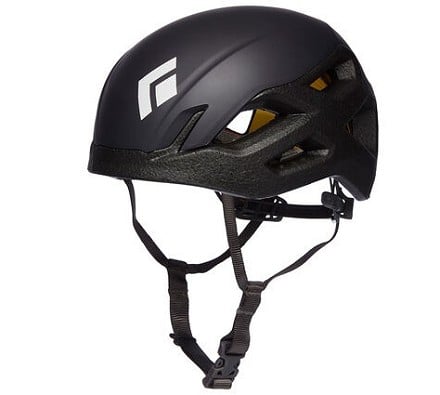






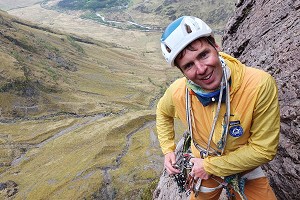


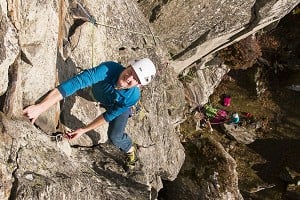
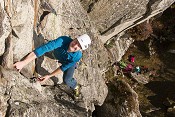


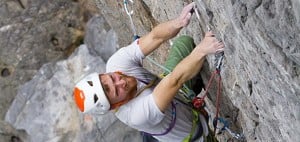

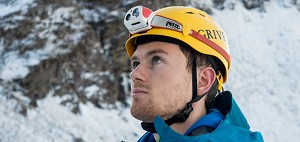

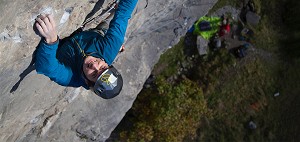

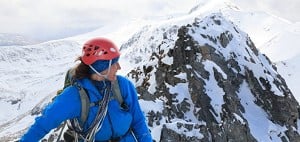



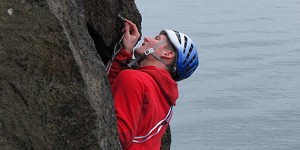

Comments
For those interested, I've already asked Martin what the route within the action shots is, and it's Empire of the Sun (E4 6a) (E4) in Glen Clova. Judging from the logbooks it's claimed a fair few scalps too. Looks amazing!
Yep, my first thought was ‘what’s that route’ rather than ‘interesting hat’ unfortunately. Initially thought it was Trilogy until I looked closer at the landscape.
It’s not the first: I’ve just bought a Mammutt MIPS Wallrider and I believe they have been around d a while
That’s one of the best pics of Glen Clova I’ve ever seen. Who took it? I’d like to use it in a book.
Re MIPS: I’m not convinced by this tech. Most of the data to date comes from the manufacturer and independent tests have not found any additional benefit over standard helmets so far.
I think it was my brother that had the camera when I was on the route. There's an entire sequence of photos from that day and of 3 different people on the route. This is actually cropped form the full photo. I can send you through some processed photos if you'd like. Just drop me an email. Regarding MIPS. I'd read that the science behind the tech had been supported by independent studies, although that was on MIPS own site.